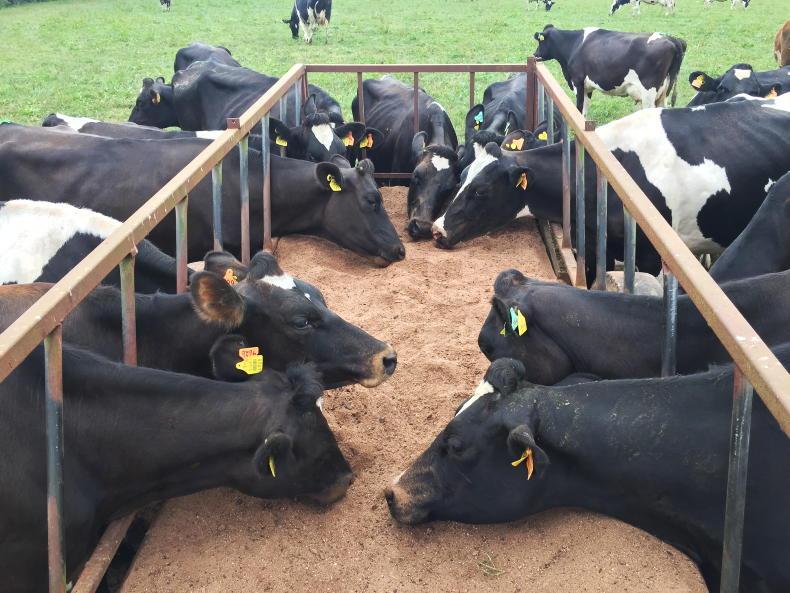The grass deficit across most of Munster and Leinster is getting very serious. With little or no rain forecast for anywhere in the next week, the situation is bound to worsen.
Even if it does rain heavily in 10 days’ time, it will take at least 10 days or two weeks for that rain to have any real impact in terms of grass growth.
This means that in the very best case scenario, it will be the middle to end of September before grass starts growing properly on farms badly affected by the dry spell now.
This points to heavy feeding for the next few weeks and/or heavy culling also, with some farmers considering offloading empty cows sooner rather than earlier.
Options
What about those who are short of silage or don’t want to eat into winter feed reserves – what can they do now if faced with another two to three weeks of feeding silage?
Feeding anything more than 5kg or 6kg of high native cereal-based meal is risky from a nutritional point of view. High-fibre straights such as palm kernel or soya hulls can be fed in addition to meal.
Palm kernel is a controversial feed, in that it has a high environmental footprint, being a by-product of the palm oil industry, which has a poor reputation.
On top of that, it can affect milk quality and the processability of milk when fed at high rates, so most processors don’t like it being fed in high rates.
Inclusion rates
Having said that, it is usually present in relatively high inclusion rates in most dairy rations at 20% to 30% of the total ration normally.
From a usability point of view, palm kernel is very easy to feed, as cows self-regulate their intake, so it can be fed ad lib. Soya hulls will need to be rationed.
Palm kernel and soya hulls can replace silage in the diet. Quotes for palm kernel are around €280/t, which is very expensive compared with the last drought in 2018 at €180/t.
At 10% moisture content, the cost per tonne dry matter of palm kernel today is around €308/t. On a cost-per-kilo-of-dry-matter basis, this is the same as buying a 200kg DM round bale of silage for €61.60 per bale into the yard.
A €50 round bale of silage is costing 25c/kg DM compared with the palm kernel costing 30.8c/kg DM. Dairy ration at €400/t is costing 46c/kg DM.
Straights
There are reports of silage costing this much money in the worst-affected areas where fodder is scarce.
In cases where silage is not available or where the quality of the silage is questionable, then feeding high-fibre straights might be a better option.
I got asked the other day how do you value a standing crop of grass that could be cut for silage or zero grazed?
The easiest way to work this out is to compare it to the cost of bale silage.
Reducing demand by offloading passenger cows could be the best option for this back end
If a 200kg DM round bale of silage costs €50 per bale and, if, say, it costs €17 to make this bale (mowing, tedding, raking, baling/wrapping, net, plastic and transport back to yard), then the value of the grass is €33.
At 200kg DM per bale, this values the grass at 16.5c/kg DM, which is obviously much higher than normal.
So based on this logic, a field with a cover of 2,000kg DM of grass is worth €330/ha or €133/acre. If zero grazing costs €85 per load and if each load brings in roughly 1t of dry matter, then that adds 8.5c/kg DM on to the cost of the grass.
There are no easy options to this problem – they all cost money. For many farmers, reducing demand by offloading passenger cows could be the best option for this back end.






 This is a subscriber-only article
This is a subscriber-only article











SHARING OPTIONS: